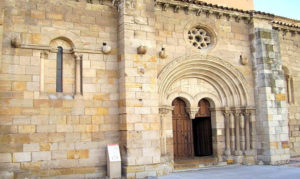Romanesque Route

With 23 temples in the municipality and 14 churches in the historic centre, it has become the European city with the highest number and quality of Romanesque temples. It rightly deserves the name “Romanesque City” or “Pearl of the Romanesque.
The Cathedral is considered the icon of Zamoran Romanesque. It is famous for its Byzantine-style vaulted dome and for housing interior disparate samples of art, including an important collection of 15th and 16th century works. The ironwork in the main chancel and choir, its stalls, the doors of the cloister, choir and sacristy, the altarpiece of the Chapel of the Cardinal and the sculpture of the Cristo de las Injurias are only some of the works of art that may be seen here. There is also a collection of Flemish tapestries, including the great exposition, “Cathedral Tapestries.” The city has 22 other Romanesque temples that may be pleasantly toured on foot.
“The Mystery of the Romanesque” is the perfect way to understand emotionally what Romanesque is, what it meant in the past and what it means today. It is another option for the visitor to see the city and be enveloped by this incomparable heritage complex.
Romanesque temples:
– Santa María Magdalena
– Santa María de la Horta
– San Claudio de Olivares
– San Esteban
– Santo Sepulcro
– San Juan de Puerta Nueva
– Santiago el Viejo o de los Caballeros
– Santa Lucía
– San Antolín
– San Isidoro
– San Pedro y San Ildefonso
– Santo Tomé
– San Vicente
– Espíritu Santo
– San Cipriano
– Santa María La Nueva
– Ermita de los Remedios
– San Frontis
– Ermita del Carmen
– San Leonardo
– San Andrés
